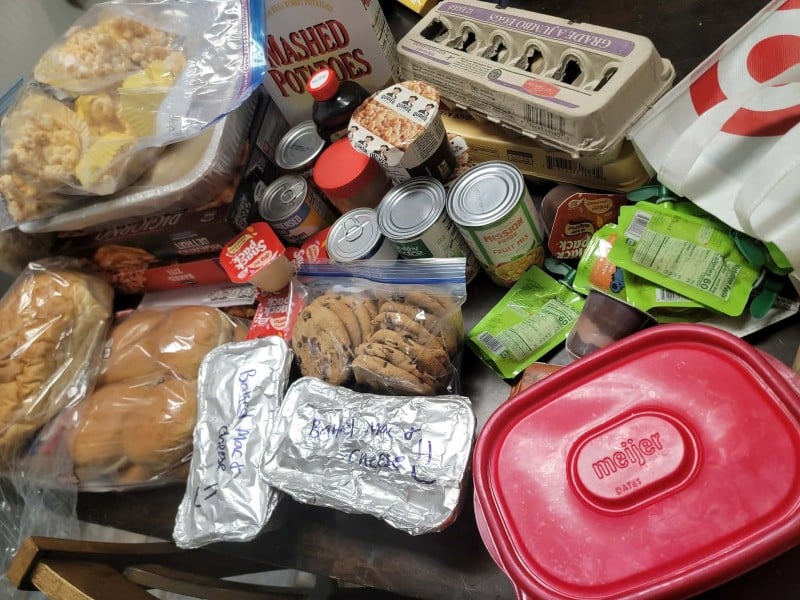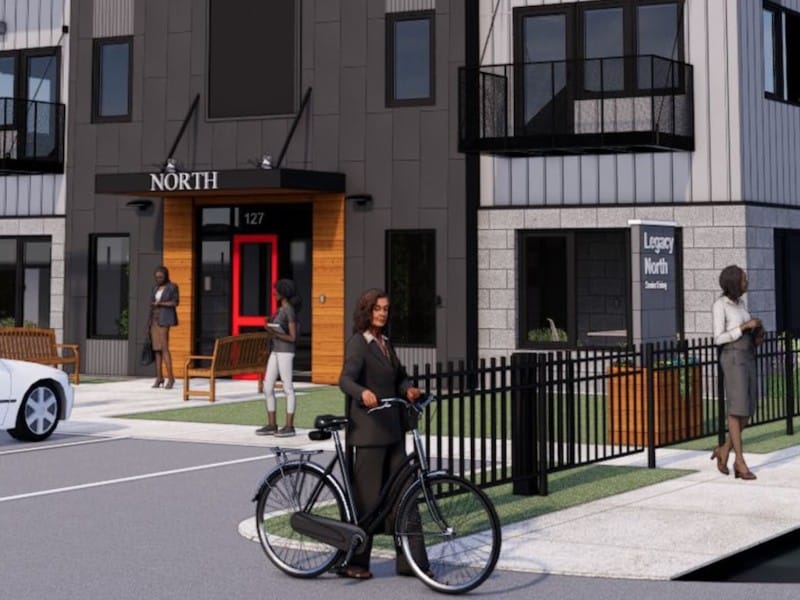Editor’s note: This story is part of Southwest Michigan Second Wave’s On the Ground Battle Creek series. Please Note: This story contains description of scenes of abuse that are not suitable for some readers. Reader discretion is advised.
The significant overlap between sex trafficking and intimate partner violence has put a Battle Creek-based agency on the front lines.
In March 2022, S.A.F.E. (Secure Area Family Environment) Place received a three-year grant totaling $185,000 from the State of Michigan to expand the organization’s mission to provide programming and services for survivors of sex trafficking.
The decision to make S.A.F.E. Place the lead organization for this work in Calhoun County was the result of conversations its leadership was having with area law enforcement officials and leaders with the county’s Sexual Assault Services, says Ellen Lassiter Collier, CEO of S.A.F.E. Place.
“We started discussing the need for one of the victims’ service providers to do this work and agreed that S.A.F.E. Place would add sex trafficking to our mission,” she says.

That was in 2020. It made sense, Lassiter Collier says, because of the intimate relationships that victims have with those who have coerced them into sex trafficking.
Overall, about 39 percent of victims of sex trafficking are trafficked by their intimate partner, says Jessica Tapscott, Clinical Coordinator at S.A.F.E. Place. Over the last five years, she says she has had about 10 clients who have experienced some form of trafficking.
One client, who asked that her name not be used, says she was 20 years old when she fell victim to sex trafficking.
She says she met her trafficker during a low point in her life.
“I had recently broke up with my college boyfriend who I thought was the love of my life. I had a miscarriage, failed my college classes, started using drugs, and lost my friend group that included my roommates. I moved in with my aunt and quickly got kicked out,” she says. “I started hanging out frequently at a dope house and one day I was on the front porch crying. He pulled up with roses and told me I shouldn’t be crying, I should be with him. That’s all it took.”
As a child sexual abuse survivor, she says she thinks that experience shaped how she saw herself and the world and negatively impacted her self-esteem. She says she has ignored her intuition her entire life because she didn’t believe in herself or her worth as a person.
She says, “A month of him sweet talking me and he said he found a house for us. He had me sign my name to a ‘contract’ for a lease to the house so I thought I was responsible for the house bill. I did not know until much later he was squatting there,” she says. “He never actually paid a bill. We were there for a matter of weeks before he hit me the first time and called me a crackhead. There were locks on the outside of doors. He would take my car and when I was at the house he would slice the tires so I couldn’t leave. When I did leave it was to work/escort because he told me I owed him money for bills.”
For two years she says she was trapped in this relationship with her trafficker.
“I went home to visit my parents, not often, but I did. They all knew something was wrong,” she says. “I went to emergency rooms and doctor appointments with broken bones, black eyes, and concussions. I kept going back. I believed he loved me.”
Her point of no return came one night when her trafficker beat her in the head with a speaker and strangled her unconscious.
“I believed I would die that night,” she says.” I woke up on the living room floor. He said he was going to the kitchen for a knife and told me he was going to bury me in the backyard. I ran out the front door to the first car I saw and escaped.”
She filed a restraining order and police report for the assault but did not follow through with the police. She says she did follow through with staying away from her trafficker and a best friend had her stay with her.
“Every day, I was scared and I didn’t believe in myself, but my friend knew what I lived through and believed in me. My friend gave me the courage to take it day by day,” she says.
Naming the abuse for what it is
“When I started at S.A.F.E. Place, we didn’t have the words to name it,” Tapscott says. “Partners putting them through this abuse at the hands of people they were sold to for service was categorized as abuse.”
This made it difficult to collect data that would represent victims of domestic abuse versus victims of sex trafficking, Tapscott says.
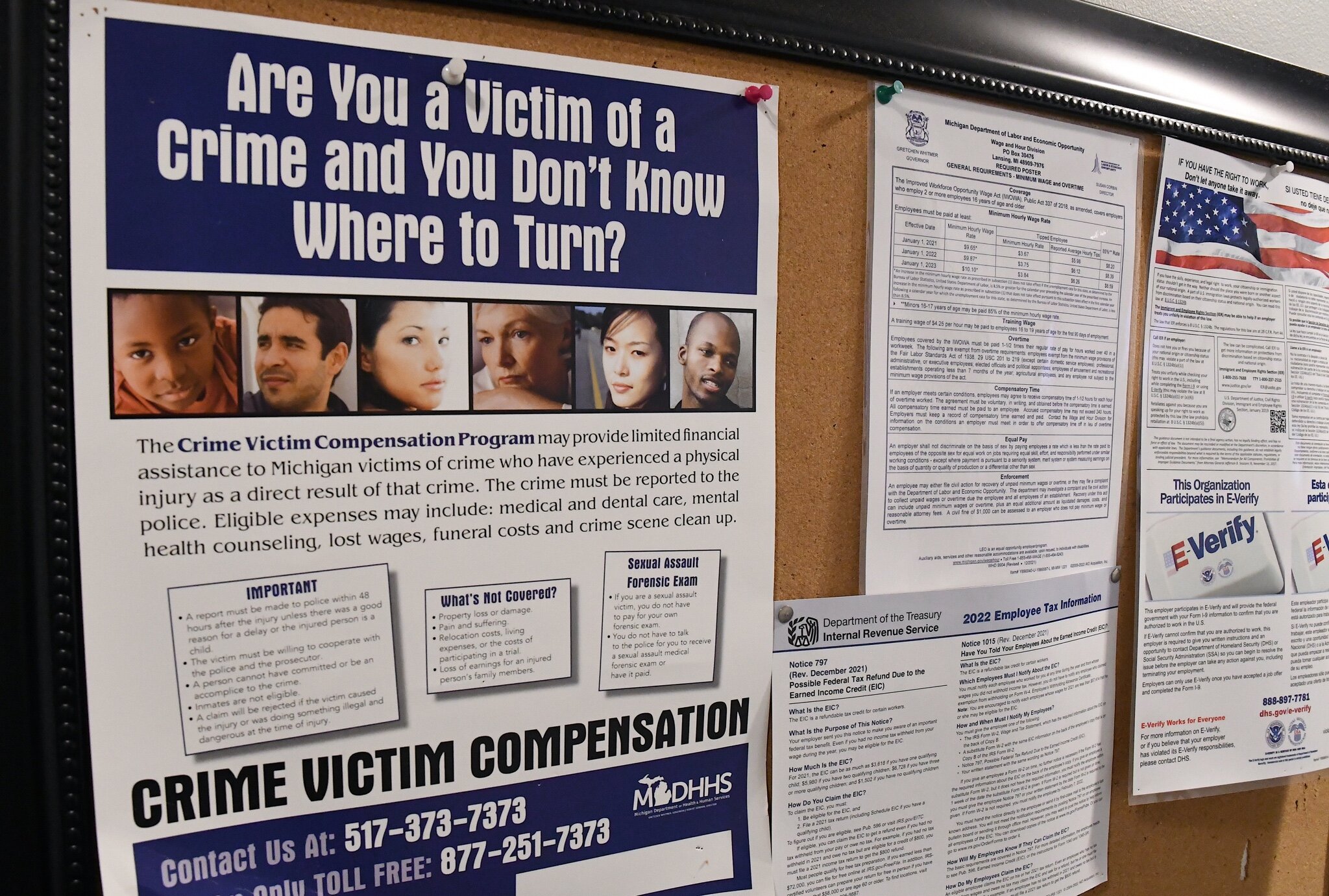
In 2022, the organization served 41 victims and their families, Lassiter Collier says. In reality, S.A.F.E. Place has been providing services and resources to both victim populations all along and now can categorize them separately.
S.A.F.E. Place’s mission statement has been expanded to include victims of sex trafficking and their families, in addition to victims of domestic assault and their families “to provide safety, empower and advocate” for these specific populations.
The grant funding, which was received in October, is being used to pay a portion of staff salaries for the work they do with survivors of sex trafficking, staff training, supplies needed for clients receiving support services like counseling, educational materials designed to increase community awareness about sex trafficking, and the addition of sex trafficking oversight work to Tapscott’s role with the organization.
“We’re still working out the kinks and designing our own work and trainings,” Tapscott says. “Our goal is to be able to provide longer shelter stays, assist with housing, especially transitional housing which is huge for this population because of the extra dynamic of trauma and vulnerabilities, counseling for trauma support, and to be able to meet victims wherever they are while knowing that each individual is going to need different things.”
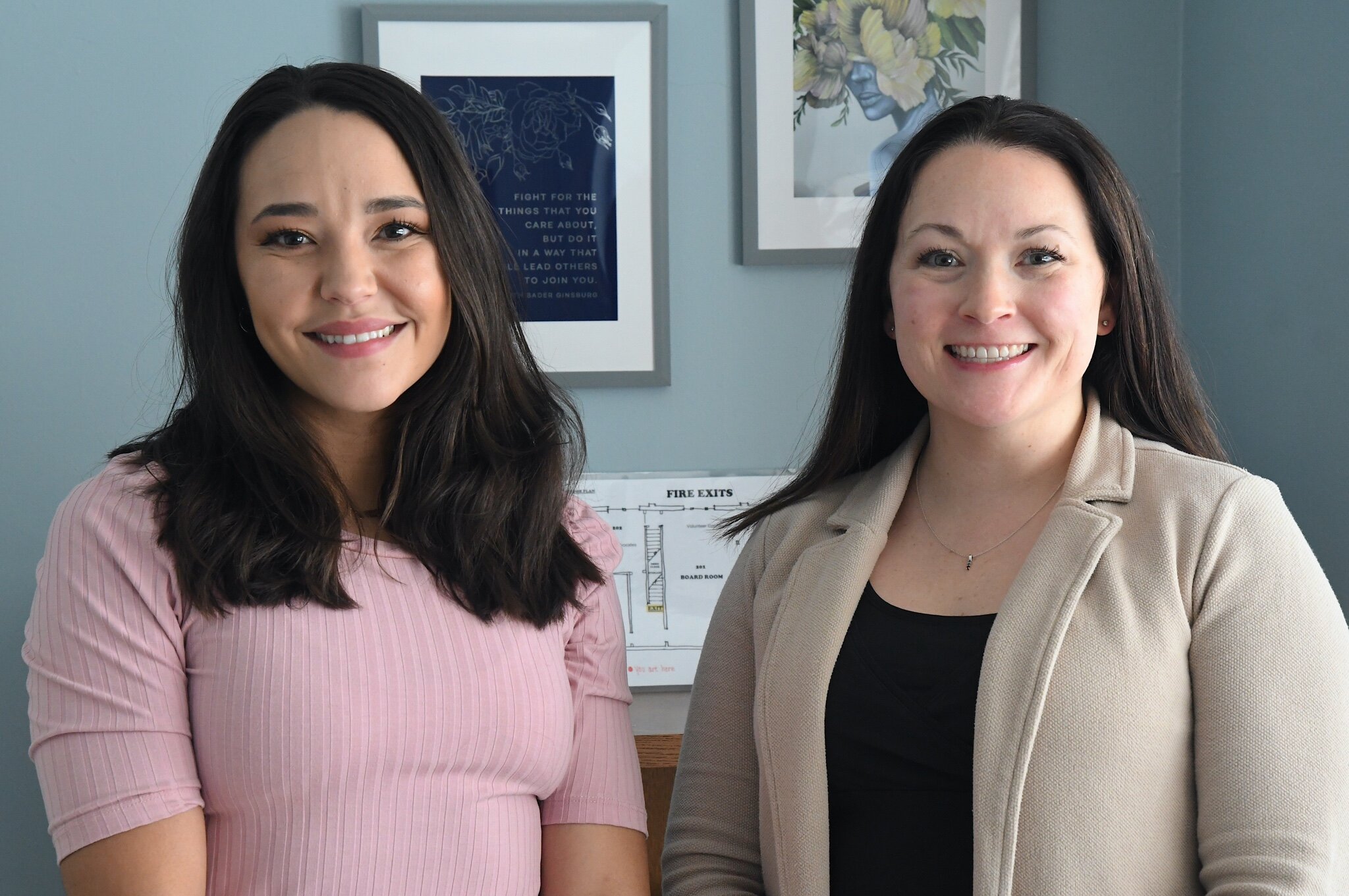
In 2022, Lassiter Collier says there was a 15 percent increase in clients served, primarily on the domestic violence side. She says her organization is working to secure about $1 million in funding to add a building in the back of its property that would include two studio apartments and two 2-bedroom apartments to address the transitional housing needs.
Currently, S.A.F.E. Place has a total of 55 beds that are set up in various configurations in each room.
Oftentimes capacity is less than 55 because Lassiter Collier says, “If we have a room with four beds and a parent with two children is in that room, we’re not going to put another single adult in that room with them,” she says. “When this happens all of the rooms are classified as occupied even if they’re not at capacity.”
S.A.F.E. Place has agreements with a local hotel that will take in clients if there is an overflow situation or a communal living situation isn’t going to work out as in the case of clients who come with their pets.
Lassiter Collier says there is a need to expand the number of beds and she would very much like to have additional space in general.
“We know that survivors of trafficking need longer stays in a supportive shelter,” she says. “We could certainly make accommodations for people to stay for four, six eight, or 12 months, but it’s not going to be comfortable or private for them.”
Having a designated place for law enforcement to refer victims for services and shelter removes the double victimization that used to happen.
Tapscott says before law enforcement became more aggressive about prosecuting and finding human trafficking rings, the victims would be treated the same way as the perpetrators and end up in detention facilities because they also were considered to be participating in criminal activity. With the changing thought process, a focus was placed on the causes that lead to an individual becoming a victim and the need to provide services and resources for them.
Sometimes victims aren’t cooperative with law enforcement because there have been “so many lies and manipulations that have gotten them to this place,” Tapscott says. “Maybe there’s love for their trafficker, this is their partner or parent, maybe there have been threats and if they cooperated with law enforcement there could be harm to their children. If there’s a lack of cooperation and if law enforcement shows up to the scene and the victim’s not going to cooperate, historically (law enforcement) is not going to want to dive deeper and ask why is this happening.”
On the rise at all levels
“Human trafficking is a $150 billion a year global industry, says Bradley Myles, CEO of Polaris, the nonprofit organization that runs the national human-trafficking hotline in the United States.
Michigan is ranked in the 10 top states for human trafficking. The National Human Trafficking Hotline said there were 295 cases reported in the state in 2020
“We do know that human trafficking is the second-largest black-market industry worldwide,” Tapscott says. “The pornography industry is rife with trafficking.”
She says those who work at hotels, strip clubs, in homes as domestic help, and in farm fields are often targets of sex traffickers.
However, the most recent incidence of sex trafficking in Calhoun County was uncovered on Thursday when the Sheriff’s office’s human trafficking intervention team—Rescuing Humanity Intervention Neighborhood Operations (RHINO) Team located and arrested three individuals in connection with a planned meeting to have sex with a child, says a press release.
“The purpose of this operation was to locate, identify, and arrest subjects utilizing social media platforms for the purpose of meeting up with children for a sexual encounter. The individuals thought they were chatting with 14-year-old children on social media and were actually communicating with officers,” the release says. “Three men, residing in Battle Creek, Jackson, and Portage, were arrested when they arrived at a location to meet up with the presumed child to have sex.”
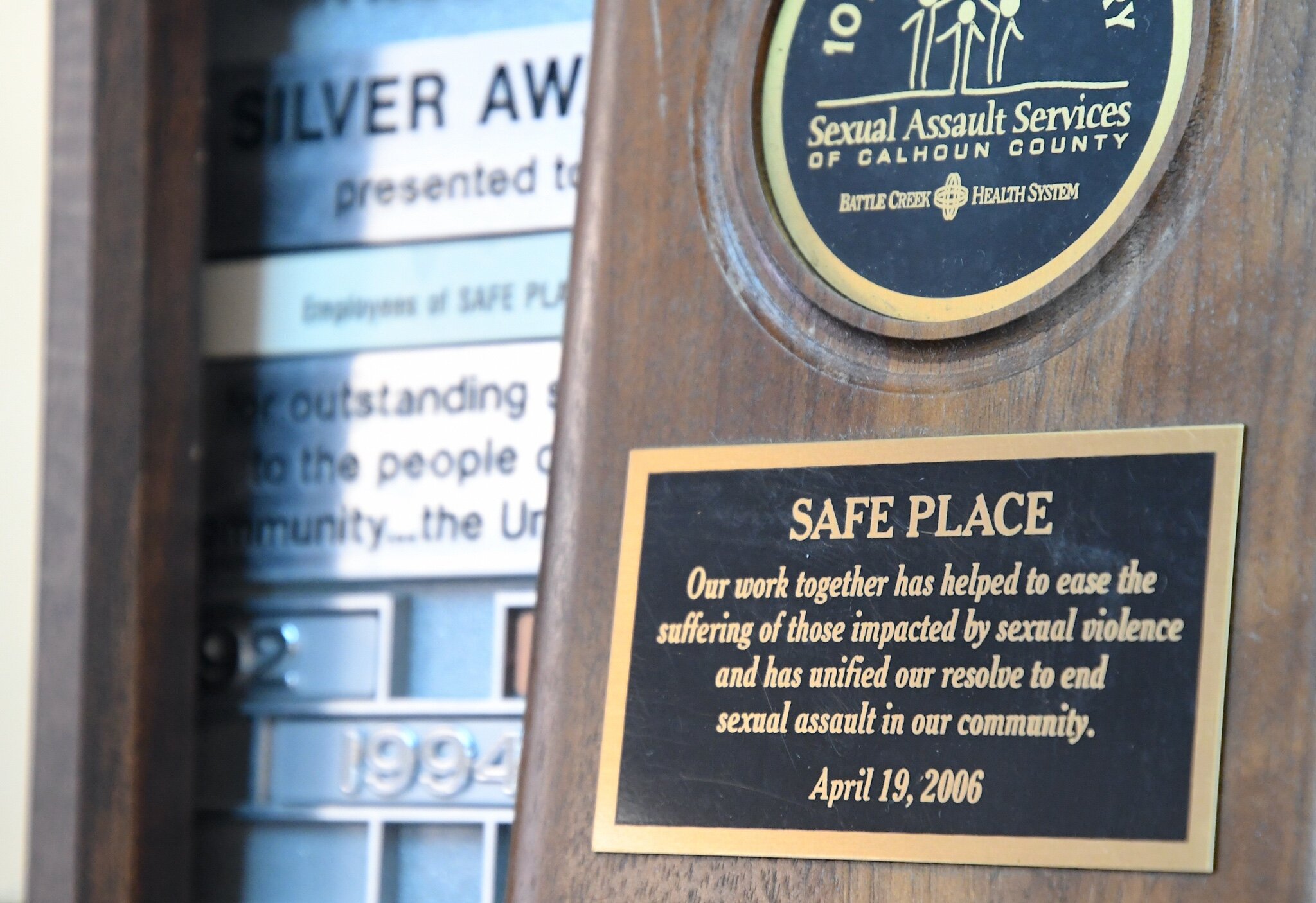
In a statement following these arrests, Sheriff Steve Hinkley says, “There are a few things that are the foundation to our community’s success and its future. Our children are one. The internet has opened opportunities to access our children that no one had ever imagined. My office will continue to shine a light of hope into the dark world of Human Trafficking and expose the pain and hurt that has on so many families. My hope is all parents should find a balance between safety and trust with their children. Digital access to our children is everywhere, and you as a parent should be too.”
The Internet, Tapscott says, has become a huge tool for accessing vulnerable people.
Sex trafficking has always been around, “We see it as increasing because we are understanding it better and identifying it for what it is,” Tapscott says. “The first human trafficking laws started in the early 2000s and every year, we learn a little bit more and gain more insights.”
These insights include the circumstances that lead to victimization.
Lassiter Collier says among the general public there are a lot of myths and misconceptions about sex trafficking that have been perpetuated over time in certain communities and circles, including what this type of trafficking looks like, where the vulnerabilities are and where it’s happening.
Tapscott says traffickers “like to pick people who are the easiest to manipulate or people who have the biggest vulnerabilities.”
The top five risk factors, according to Polaris, are the following: recent migration; mental or physical health concerns; substance use; lack of stable housing; and runaways.
“It’s really any vulnerabilities you can think of,” Tapscott says.
Tapscott’s former client who counts herself among survivors of sex trafficking says some things can be done to prevent someone else from becoming a victim, including educating people about what trafficking really is and what it looks like; stopping the sensationalism of it so people can recognize their own situations and also when to help others; and fund programs that are working to prevent child abuse and other traumatic experiences in childhood; and support efforts to build healthy families and relationships.
“I believe this would prevent people from becoming victims and perpetrators,” she says. “We have cycles of trauma repeating and not enough invested in prevention and focused on how it begins. I am 40 years old and did not even begin to face this part of my life until I had been out of it for about a decade. I have done intentional work through therapy (recently EMDR), reading, boundary work, and self-care. I also know I am not done with my recovery because many memories still bring me right back to the day they occurred.”




